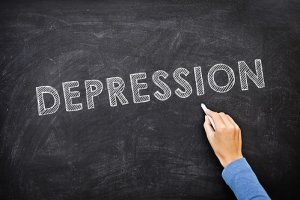While it may seem like a harmless position to be in all day, sitting all day is awful for one’s health. For the past eight months, the world has been transitioning to the “new normal” that is so often referred to. In the United States, many companies have made the decision to have their employees work from home in order to reduce the chance of the virus spreading. Research has been conducted on the effects of sitting for long periods of time throughout the day for years, but with the growing numbers of stay at home employee’s this information is more important than ever.
Sitting may be linked to the development of chronic disease
A lack of activity in one’s life has been linked to chronic diseases such as cancer, heart disease, diabetes, kidney, and liver problems. The decrease in physical activity can effect one’s blood pressure which leads to a higher risk of having a stroke or a heart attack.
Research shows that there is a link between cancer and the lack of physical activity. The reason is still being updated, but according to the American Cancer Society, one possible explanation is that sitting effects the immune system and hormone levels which leads to increased chances of the development of cancer (Simon, 2018).
 (Lam, G. 2018)
(Lam, G. 2018)
Sitting may increase chances of developing a breathing disorder
After sitting all day, it is inevitable that you will start to slump after time. This slumping decreases the space that your lungs have to expand, meaning that you are not able to breathe as well. After time, this reduced space can lead to the development of a breathing disorder.
Sitting may make it harder for your brain to function.
In order for our brains to function, they need air. As mentioned in the previous section, sitting can effect how well you are breathing. According to the Physical Activity Guidelines for Americans, this decreased amount of air can lead to changes in the function of the brain (US. Department of Health and Human Services, 2018). Functions such as how fast information can be processed, memory, attention, and so on will be effected.
Now that you have heard all of the nerve-wracking information, what do you do?
Exercise!
According to The Physical Activity Guidelines for Americans, adults should be completing 150 to 300 hours of physical activity per week. The guidelines focus on aerobic exercise (cardio) and strengthening muscles as the best forms of physical activity (US. Department of Health and Human Services, 2018). This means that the average adult should exercise at least 20 minutes a day.
Adjust your work environment!
Adjusting your work environment will decrease the effect that sitting has on the muscles and bones over time.
Chair:
- Feet on the floor
- Eyes level with the top of the monitor.
- Arm rests should allow arms to rest flat without any rising of the shoulders
- Back should be supportive and keep your back up straight
Desk:
- If sitting, the desk height should be level with arm rests
- If using a sit-to stand desk, keep the top of the monitor level with the eyes
 (Work-Fit, 2018)
(Work-Fit, 2018)
Move around!
Every hour, take 5 to 10 minutes to walk around, stretch, or just stand!
References
Albarrati, A., Zafar, H., Alghadir, A. H., & Anwer, S. (2018). Effect of Upright and Slouched Sitting Postures on the Respiratory Muscle Strength in Healthy Young Males. BioMed research international, 2018, 3058970. https://doi.org/10.1155/2018/3058970
Dorsey, J. (2020). Home office ergonomic tips. American Occupational Therapy Association. Retrieved October 23, 2020, from https://www.aota.org/-/media/Corporate/Files/Practice/Manage/Home-Office-Ergonomics-Tips.pdf
González, K., Fuentes, J., & Márquez, J. L. (2017). Physical Inactivity, Sedentary Behavior and Chronic Diseases. Korean journal of family medicine, 38(3), 111–115. https://doi.org/10.4082/kjfm.2017.38.3.111
Levine, J. (Director). (2014). Sitting Disease [Video file]. Retrieved 2020, from https://www.youtube.com/watch?v=MfRD_a4KQoI
Muehlhan, M., Marxen, M., Landsiedel, J., Malberg, H., & Zaunseder, S. (2014). The effect of body posture on cognitive performance: a question of sleep quality. Frontiers in human neuroscience, 8, 171. https://doi.org/10.3389/fnhum.2014.00171
Murat, D. (Director). (2015). Why sitting is bad for you [Video file]. Retrieved 2020, from https://www.youtube.com/watch?v=wUEl8KrMz14
Piercy KL, Troiano RP, Ballard RM, Carlson SA, Fulton JE, Galuska DA, George SM, Olson RD. The Physical Activity Guidelines for Americans. JAMA. 2018 Nov 20;320(19):2020-2028. doi: 10.1001/jama.2018.14854. PMID: 30418471.
Simon, S. (2018, June 29). Sitting Time Linked to Higher Risk of Death from All Causes. Retrieved November 19, 2020, from https://www.cancer.org/latest-news/sitting-time-linked-to-higher-risk-of-death-from-all-causes.html




 .
. 







